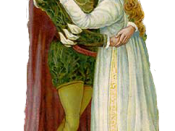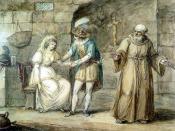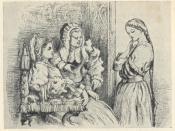William Shakespeare's "Romeo and Juliet" was based upon Arthur Brooke's poem - "The Tragicall History of Romeus and Juliet" (1562). He wrote a play that the audience already knew - Romeo and Juliet was a tragedy originally written in 1599.
The opening of the play creates tension, which is followed throughout the ply by the dramatic irony of the chorus giving the prologue to the play, making the audience start to wonder when things will happen.
"Who will fall in love?"
"Who will die?"
"Who will fight?"
"Who is the conflict between?" they might ask.
In Act 1 scene5, there are many different moods and atmospheres, beginning with the orders and instructions, making the atmosphere feel busy with lots of rushing around and shouting.
"Where's Potpan, that he helps not to take away?"
"Away with the joint stools; remove the court cupboard; look to the plate."
Capulet then welcomes the guests and invites them to dance.
"Welcome, gentlemen! Ladies that have their toes unplagu'd with corns will walk about with you."
"Ah my mistresses, which of you all will now deny me to dance?"
This is a more relaxed atmosphere which is more welcoming to the guests.
Then Tybalt recognizes the voice of Romeo and starts to get angry.
"This, by the sound of his voice, should be a Montague."
Tension is created when Capulet gets angry at Tybalt for trying to cause havoc at the party.
After tension, comes romance, when Romeo and Juliet meet.
Romeo greets Juliet with,
"I profane with my unworthiest hand
This holy shrine, the gentle sin this:
My lips, two blushing pilgrims, ready stand
To smooth that rough touch with a tender kiss."
Juliet replies,
"Good pilgrim, you do wrong your hand too much,
Which mannerly devotion shows this;
For saints have...


